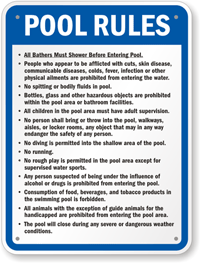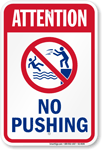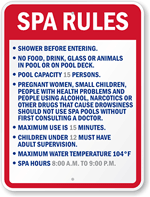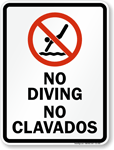Nonswimmers becoming health crisis in U.S. and U.K.
The news out of Britain is ominous for an island nation: More than 50 percent of children age 7 to 11 can’t swim 25 meters, according to a new study. This in a country where swimming is actually a required skill for graduation! In America, lack of swimming skills is becoming a serious problem as well. As in the U.K., the culprit is a lack of funding for swimming pools and learn-to-swim programs in schools. But unlike our neighbors across the pond, American schools have largely abandoned swimming requirements.
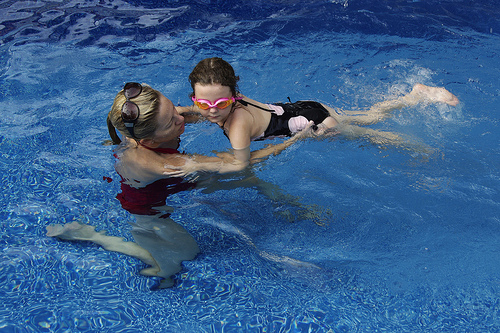
Countries should start to approach swimming education as a potentially lifesaving measure. From Monkey Mash Button.
The result is that more and more children are failing to learn a vital lifesaving skill — especially the poor and disadvantaged. More than 70 percent of African American children don’t know how to swim today, leading to a drowning rate that’s three times higher than white children. Other minority children are similarly at risk.
But it’s not just kids who are drowning. Years of swimming education neglect has produced a predictable, though little-known, result. Nationwide, nearly 40 percent of the adults can’t swim the length of a 25-yard pool. In states like Minnesota — land of 10,000 lakes — half of all adults don’t know how to swim. No wonder 70 percent of U.S. drownings are adults.
At this rate, the U.S. and U.K. will begin to look more like the rest of the world, where drowning is nearly a health epidemic taking more than 350,000 lives annually. A few key statistics from the World Health Organization:
- Low- and middle-income countries account for 95 percent of unintentional drowning deaths
- Over half of the world’s drowning occurs in the WHO Western Pacific Region and WHO South-East Asia Region
- Drowning death rates are highest in the WHO African Region, and are 10-13 times higher than those seen in the United Kingdom or Germany respectively.
The lesson? Not knowing how to swim is a health risk similar to not being inoculated against polio or measles. Some are starting to get it. Recognizing their state has a serious health problem, two Minnesota lawmakers are calling for required swimming lessons in schools. More nonprofits are stepping up to take up the slack. The USA Swimming Make a Splash foundation reaches out to minority children with its traveling swimming lessons. And places such as are helping teach adults who are afraid of the water how to overcome that fear and learn a vital skill.
You can do your part by setting an example for your kids. If you’ve never learned how to swim, either out of fear or lack of a teacher, start now. After all, swimming is one of the best exercises you can do as your body ages. So learning to swim may not just save your life, but also give you a new lease on one!
Category: Natural water, Pools, Safety, Uncategorized



